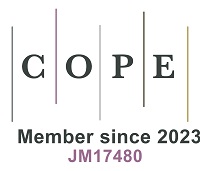REFERENCES
1. Zhao, D.; Cai, J.; Xu, Y.; Liu, Y.; Yao, M. Carbon sinks in urban public green spaces under carbon neutrality: a bibliometric analysis and systematic literature review. Urban. For. Urban. Gree. 2023, 86, 128037.
2. Zhao, X.; Ma, X.; Chen, B.; Shang, Y.; Song, M. Challenges toward carbon neutrality in China: strategies and countermeasures. Resour. Conserv. Recy. 2022, 176, 105959.
3. Nieto, M. J. Whatever it takes to reach net zero emissions around 2050 and limit global warming to 1.5c: the cases of United States, China, European Union and Japan. BAFFI CAREFIN Centre Research Paper No. 2022-170; 2022.
4. Hou, M. Z.; Luo, J.; Huang, L.; et al. Strategies toward carbon neutrality: comparative analysis of China, USA, and Germany. Carbon. Neutral. Syst. 2025, 1, 3.
5. Running, S.; Zhao, M. MOD17A3HGF MODIS/terra net primary production gap-filled yearly L4 global 500 m SIN Grid V006. NASA Land Processes Distributed Active Archive Center; 2019.
6. Chen, J.; Gao, M.; Cheng, S.; et al. County-level CO2 emissions and sequestration in China during 1997-2017. Sci. Data. 2020, 7, 391.
7. Lorenz, K.; Lal, R. The importance of carbon sequestration in forest ecosystems. In: Carbon Sequestration in Forest Ecosystems. Dordrecht: Springer; 2010.
8. Roxburgh, S. H.; Berry, S. L.; Buckley, T. N.; Barnes, B.; Roderick, M. L. What is NPP? Inconsistent accounting of respiratory fluxes in the definition of net primary production. Funct. Ecol. 2005, 19, 378-82.
9. Uchijima, Z.; Seino, H. Agroclimatic evaluation of net primary productivity of natural vegetations: (1) Chikugo model for evaluating net primary productivity. J. Agric. Meteorol. 1985, 40, 343-52.
10. Landsberg, J.; Waring, R. A generalised model of forest productivity using simplified concepts of radiation-use efficiency, carbon balance and partitioning. Forest. Ecol. Manag. 1997, 95, 209-28.
11. Potter, C. S.; Randerson, J. T.; Field, C. B.; et al. Terrestrial ecosystem production: a process model based on global satellite and surface data. Global. Biogeochem. Cycles. 1993, 7, 811-41.
12. Schaefer, K.; Collatz, G. J.; Tans, P.; et al. Combined simple biosphere/carnegie-ames-stanford approach terrestrial carbon cycle model. J. Geophys. Res. 2008, 113, 2007JG000603.
13. Huang, C.; Sun, C.; Nguyen, M.; et al. Spatio-temporal dynamics of terrestrial net ecosystem productivity in the ASEAN from 2001 to 2020 based on remote sensing and improved CASA model. Ecol. Ind. 2023, 154, 110920.
14. Ling, S.; Gao, Z.; Ma, C.; You, H. Estimation of net primary productivity of vegetation and vegetation carbon sink in Tianjin area based on CASA model. Tianjin. Agric. Sci. 2022, 28, 69-75+81.
15. Xu, F.; Wang, X.; Li, L. NPP and vegetation carbon sink capacity estimation of urban green space using the optimized CASA model: a case study of five Chinese cities. Atmosphere 2023, 14, 1161.
16. Liu, W.; Li, X.; Li, T.; Jia, B. Spatiotemporal variations of forest NPP and related driving factors based on MODIS and CASA models in Yichun. Shengtaixue. Zazhi. 2022, 41, 150-8.
17. Potter, C.; Pass, S. Changes in the net primary production of ecosystems across Western Europe from 2015 to 2022 in response to historic drought events. Carbon. Bal. Manag. 2024, 19, 32.
18. Piao, S.; He, Y.; Wang, X.; Chen, F. Estimation of China’s terrestrial ecosystem carbon sink: methods, progress and prospects. Sci. China. Earth. Sci. 2022, 65, 641-51.
19. Pei, Z.; Zhou, C.; Ouyang, H.; Yang, W. A carbon budget of alpine steppe area in the Tibetan Plateau. Geograp. Res. 2010, 29, 102-10.
20. Liang, L.; Wang, Q.; Qiu, S.; Geng, D.; Wang, S. NEP estimation of terrestrial ecosystems in China using an improved CASA model and soil respiration model. IEEE. J. Sel. Top. Appl. Earth. Observ. Remote. Sens. 2023, 16, 10203-15.
21. Shen, S.; Wu, C.; Gai, Z.; Fan, C. Analysis of the spatiotemporal evolution of the net carbon sink efficiency and its influencing factors at the city level in three major urban agglomerations in China. Int. J. Environ. Res. Public. Health. 2023, 20, 1166.
22. Muñoz-Sabater, J.; Dutra, E.; Agustí-Panareda, A.; et al. ERA5-land: a state-of-the-art global reanalysis dataset for land applications. Earth. Syst. Sci. Data. 2021, 13, 4349-83.
24. Zhang, X.; Liu, L.; Chen, X.; Gao, Y.; Xie, S.; Mi, J. GLC_FCS30: global land-cover product with fine classification system at 30 m using time-series Landsat imagery. Earth. Syst. Sci. Data. 2021, 13, 2753-76.
25. Liu, S.; Wang, H.; Hu, Y.; et al. Land use and land cover mapping in China using multimodal fine-grained dual network. IEEE. Trans. Geosci. Remote. Sens. 2023, 61, 1-19.
26. Piao, S.; Fang, J.; Guo, Q. Application of CASA model to the estimation of Chinese terrestrial net primary productivity. Chin. J. Plan. Ecol. 2001, 025, 603-8. Available from: https://www.plant-ecology.com/EN/Y2001/V25/I5/603 [Last accessed on 10 Oct 2025].
27. Zhu, W.; Pan, Y.; Zhang, J. Estimation of net primary productivity of Chinese terrestrial vegetation based on remote sensing. Chinese. J. Plant. Ecol. 2007, 31, 413-24.
28. Pan, J.; Wen, Y. Estimation and spatial-temporal characteristics of the carbon sink in the arid region of northwest China. Acta. Ecol. Sin. 2015, 35, stxb201405211045.
29. Wang, H.; Xu, X.; Wang, Z.; et al. Abnormal litter induced by typhoon disturbances had higher rates of mass loss and carbon release than physiological litter in coastal subtropical urban forest ecosystems. Forests 2022, 13, 1819.
30. Huang, C.; Liu, H.; Chung, C. Contribution of environmental factors to post-typhoon litterfall stability in subtropical montane cloud forests of the Asia-Pacific region. Forest. Ecol. Manag. 2024, 558, 121757.
31. Medl, A.; Stangl, R.; Florineth, F. Vertical greening systems - A review on recent technologies and research advancement. Build. Environ. 2017, 125, 227-39.
32. Randerson, J. T.; Iii, F. S. C.; Harden, J. W.; Neff, J. C.; Harmon, M. E. Net ecosystem production: a comprehensive measure of net carbon accumulation by ecosystems. Ecol. Appl. 2002, 12, 937.
33. Luo, M.; Huang, J.; Zhu, W.; Tong, C. Impacts of increasing salinity and inundation on rates and pathways of organic carbon mineralization in tidal wetlands: a review. Hydrobiologia 2019, 827, 31-49.
34. Lao, Q.; Chen, F.; Jin, G.; et al. Characteristics and mechanisms of typhoon-induced decomposition of organic matter and its implication for climate change. JGR. Biogeosci. 2023, 128, e2023JG007518.
35. Wang, C.; Sardans, J.; Tong, C.; Peñuelas, J.; Wang, W. Typhoon-induced increases in porewater nutrient concentrations and CO2 and CH4 emissions associated with salinity and carbon intrusion in a subtropical tidal wetland in China: a mesocosm study. Geoderma 2021, 384, 114800.
36. Yilmaz, M. Accuracy assessment of temperature trends from ERA5 and ERA5-Land. Sci. Total. Environ. 2023, 856, 159182.
37. Miura, T.; Huete, A.; Yoshioka, H. Evaluation of sensor calibration uncertainties on vegetation indices for MODIS. IEEE. Trans. Geosci. Remote. Sens. 2000, 38, 1399-409.
38. Wang, Y.; Ni, Z.; Hu, M.; Chen, S.; Xia, B. A practical approach of urban green infrastructure planning to mitigate urban overheating: a case study of Guangzhou. J. Clean. Prod. 2021, 287, 124995.
39. Paris Agreement. 2015. Available from: https://heinonline.org/HOL/LandingPage?handle=hein.journals/intlm55&div=46&id=&page= [Last accessed on 10 Oct 2025].








